Taj Mahal is the epitome of grandeur and splendour, you cannot fathom the beauty of this white marbled monument unless you stand in front of it. As you approach Taj Mahal, it gradually becomes known to you that this is no ordinary monument, but a vision come to life! Moved by its beauty and the deep affection of Shah Jahan for Mumtaz, the Nobel Laureate Rabindranath Tagore called it "a teardrop on the face of eternity". A UNESCO World Heritage Site, it is located on the bank of the Yamuna River and is counted among the most popular heritage monuments in India.
Built between 1631 and 1648 AD, the Taj Mahal stands as the finest example of Indo-Islamic architecture, and is one of the seven wonders of the world. The timeless beauty of the Taj is a reflection of the profound pain and longing which Shah Jahan was overcome by after the death of Mumtaz Mahal. Today, visitors celebrate, reflect and admire the splendour of the Taj. Inside, both Shah Jahan and Mumtaz lie buried in their graves, divided in life, but united in death.
There is nothing ordinary about the Taj. From its minarets which are always bent curiously outwards to its inlay work, calligraphy, gateways, panels and arches, every nook and corner is a manifestation of divine grace that its builder seems to have been blessed with. Every intricate detail that catches your eye is worthy of being described in thousands way for its exquisite beauty. Unsurprisingly, Taj Mahal always occupies the first place in the heritage tourism attractions in Uttar Pradesh.
Architecture
The Taj Mahal is the finest example of Indo-Persian architecture. It incorporates Persian, Indian and Islamic architectural styles. The main gateway of the Taj Mahal, which is the most photographed section of the monument, consists of a door carved from solid silver. It is believed that this door was built to prevent the tomb which is located inside from being visible from anywhere. The tomb, therefore, is only visible when you have arrived at the gateway itself. Look up though and you will find the ceiling decorated with verses from the Holy Quran in wonderful calligraphy.
The tomb itself is built in a rectangular shape and lies at the northern end of the Taj Mahal. While the ceiling is decorated with floral patterns, the floors and other areas of the room are adorned with floral designs. Here, it is interesting to know that the tombs visible to the public and tourists are not the real tombs of Shah Jahan and Mumtaz. The real ones are protected in a crypt.
One feature of the Taj Mahal which makes its presence everywhere are the lily flowers. This suggests the love of the Mughals for gardens. Indeed, some of the best gardens in India were built by the Mughals. The central hall is surrounded by eight rooms which are connected by a common corridor.
No description of the architecture of the Taj Mahal is complete without mentioning its dome. It stands like a crown on a king and plays a big role in lending this monument a feeling of eternity. Bulbous shaped, the outer doom stands at a height of almost 44.4m, while the inner dome stands at a height of almost 24.3m. It is popularly believed that this dome was built by Ismail Afandi from Turkey, a renowned palace dome designer in Turkey. Here too, the combination of Hindu and Islamic styles of architectures is visible in the form of “chhatris” (an umbrella like structure), which is a feature mostly found in temples.
Interesting Facts about Taj Mahal
- The construction of the Taj Mahal took around 22,000 painters, stonecutters, embroidery artists and labourers.
- Around 1,000 elephants were used to transport the materials to the construction site.
- Shah Jahan wanted to build a black Taj Mahal which would stand across from the original one. However, before he could do so, he was deposed by his own son Aurangzeb.
- The minarets are leaning away from the monument in order to prevent any damage to it in the event of a collapse.
- It took 17 years to complete the building of the Taj Mahal.

- The Taj Mahal appears to change colors throughout the day. In the morning, it is milky white, in the afternoon, it looks like its tinged with crimson while at night, it sparkles under the moonlight.
- Although most of the Taj Mahal is ornately decorated, the only part which is not is the tomb.
- Henry Saint Clair Fredericks, an American Grammy Award Winning Blues musician, was so enamored of the Taj Mahal that he named himself after it.
- The Taj Mahal seems to get smaller as you move towards it, and larger as you move away from it.
- During times of war, the Taj Mahal is hidden with a scaffolding so as to prevent it from any attack. This was done during World War 2, the 1971 India-Pakistan War and in the 9/11 attack.
Entry Fee
There are different entry fees for domestic and international tourists. Foreign tourists have to pay 1100 INR + 200 INR. There is an additional fee for visiting the mausoleum, which is optional. Citizens of SAARC and BIMSTEC countries have to pay 540 INR + 200 INR. There is a separate fee for those wanting to visit the memorial. Domestic tourists have to pay 50 INR + 200 INR (for those wanting to visit the mausoleum).
Best Time to Visit
Taj Mahal, one of the top heritage attractions of India, can be visited throughout the year. During summer, it can get quite hot. If you are brave enough to face the heat, then you can visit it without any problem. However, the cool and pleasant weather during winters creates the perfect conditions for visiting it. Taj Mahal opens 30 minutes before sunrise and closes 30 minutes before sunset. It is closed for general viewing to all visitors on Fridays.
Nearby Tourist Attractions
There are several famous monuments located in close proximity to the Taj Mahal, one of the UNESCO Heritage Sites in India. Some of these are:
- Agra Fort (2.9 km): A UNESCO World Heritage Site, it evokes admiration from onlookers for its colossal size and magnificence.
- Fatehpur Sikri (41.4 km): Like the Taj Mahal and Agra Fort, Fatehpur Sikri is a UNESCO World Heritage Site.
- Itmad-ud-Daulah Tomb (6.7 km): It is the first tomb in India built out of pure white marble.
- Shri Mankameshwar Temple (4.2 km): Mankameshwar Temple one of the four ancient Shiva temples standing on each corner of the Agra city.
- Akbar's Tomb (14.8 km): Located in Sikandra, Akbar’s Tomb is also a very popular tourist attraction. As the name suggests, this is the final resting place of Akbar.










































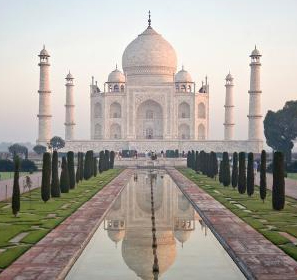
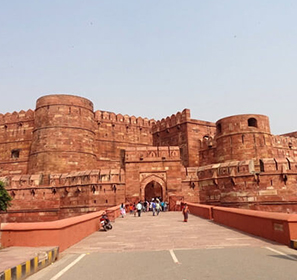


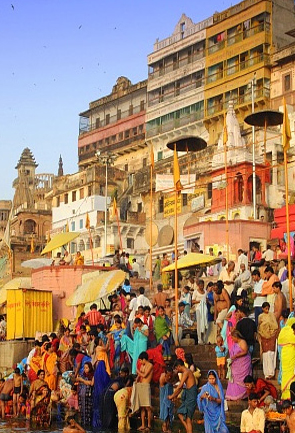



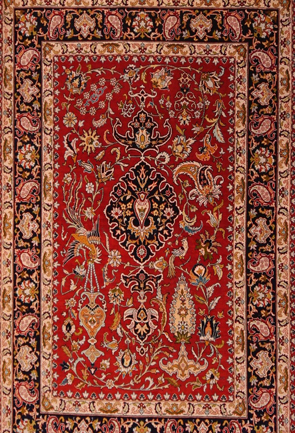
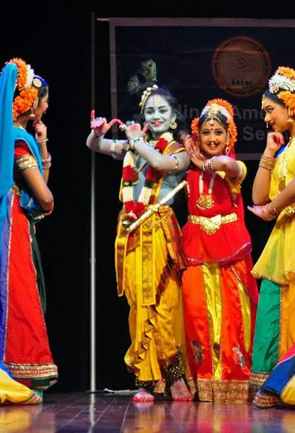
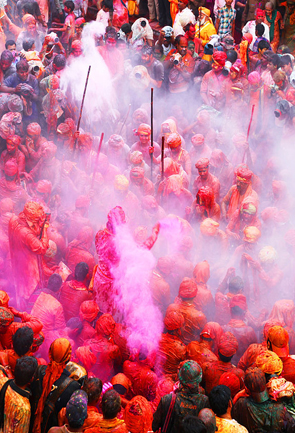


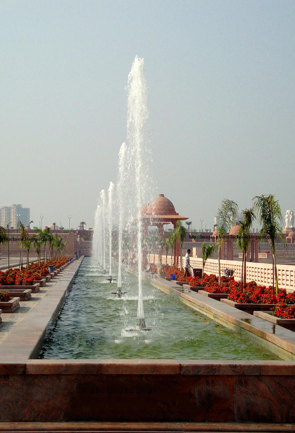

 Plan Trip
Plan Trip Call Us
Call Us Packages
Packages Home
Home